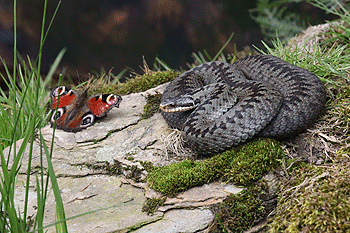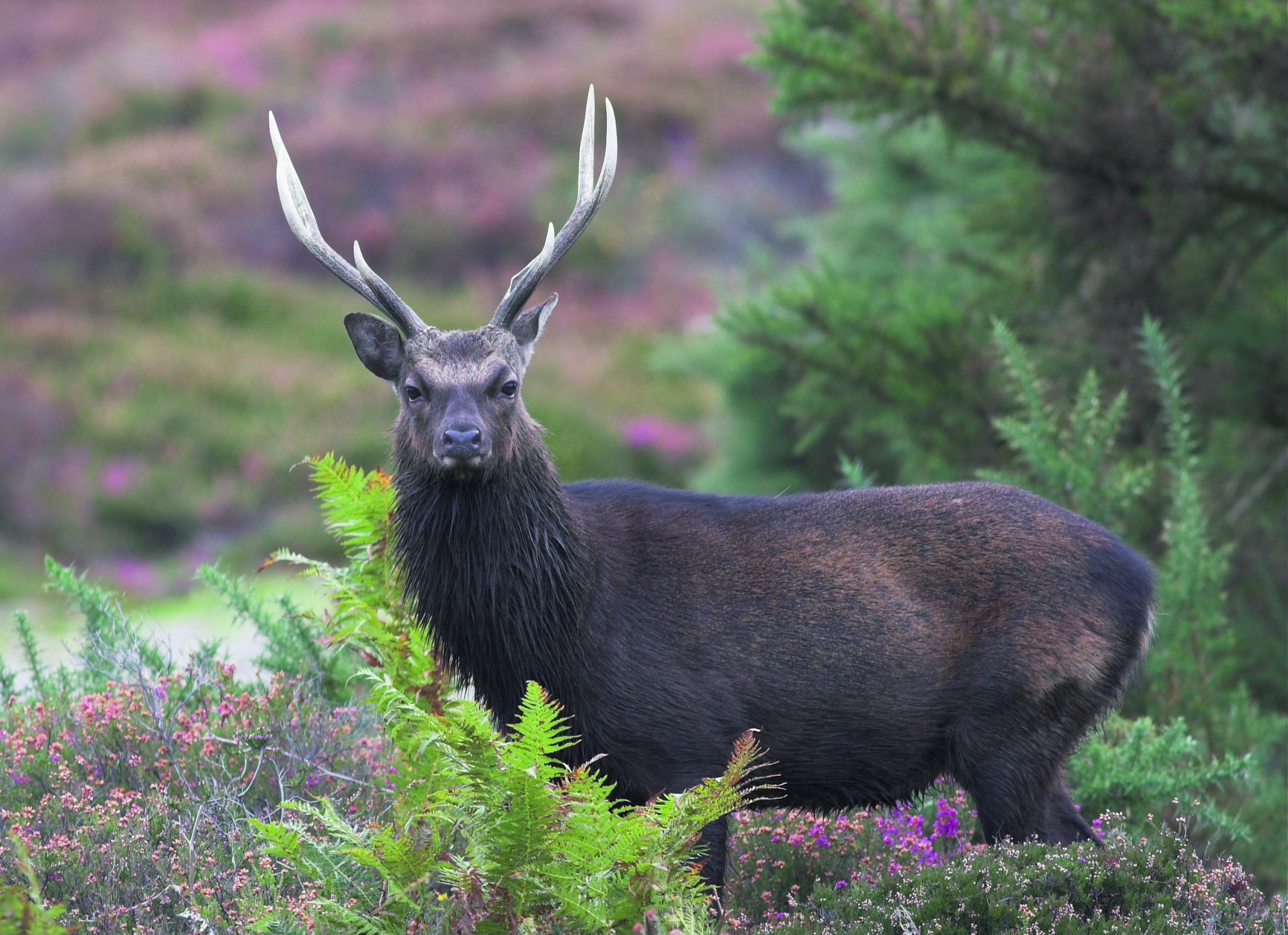News
The Vulnerable viper
<strong>Rodger McPhail finds adders “irresistible”, and thinks it is time we replaced our fear of the snake with a concern for its conservation</strong>
Would you like to speak to our readers? We offer sponsored articles and advertising to put you in front of our audience. Find out more.
Those who have seen an adder in the wild are likely to remember it. For some, the experience is one of excitement and interest; for others, it?s one of shock, fear and loathing.
I have always found them irresistible. Four years ago I was delighted to discover a colony of adders on the moors near my home. Since then I have taken every opportunity to study and photograph these fascinating reptiles. Adders can be found in quite a variety of habitats, from sand dunes to high moorland. Their main requirements are freedom from disturbance, suitably high and dry banks for hibernating and lower, wetter terrain for hunting.
Unfortunately, many people are so preoccupied with the fact that the adder is venomous that they cannot appreciate the beauty of this vulnerable and much maligned creature. The truth is that, in spite of their fearsome reputation, adders are not aggressive and unless you try to pick one up you are unlikely to get bitten. To put the danger into perspective, no-one in Britain has died from an adder bite for more than 30 years, but many more have died from bee stings.
The best time of year to see adders is the spring when the ground cover is still low and the snakes are easier to spot. In suitable places many adders can be seen basking together. Basking is of huge importance to adders; they are like living solar panels and get a lot of their energy directly from the sun. In tropical regions most snakes? eggs are incubated by the hot climate. In northern Europe this method is less reliable, so our grass snake lays its eggs in rotting vegetation to provide the necessary warmth. The adder goes one step further by giving birth to live young, and pregnant females bask in the sun?s rays to incubate their growing babies. This has enabled Vipera berus to range further north than any other reptile.
Adders spend half the year hibernating; they never use any more energy than is absolutely necessary and their metabolism is so efficient that between five and 10 voles a year are all they need to eat. They use the warmth of the sun to bring their body up to working temperature, to build up sperm for the mating season, to digest food and to incubate their offspring. The Green Party should adopt the adder as its emblem!
Adders are unusual snakes in that they exhibit a great variety of background colours from silvery white to black. Their markings, particularly on the head and neck, are as unique as a fingerprint and it is possible to recognise individuals year after year.
Dance of the Adders
Mating takes place in April and early May. Rival males will indulge in the most spectacular ritualised combats known as the Dance of the Adders. The two contestants rear up side by side and attempt to force each other to the ground. They twist, roll and wrestle until one capitulates and retreats, often pursued by the victor.
After mating, the snakes disperse and can travel some distance to lower, damper ground to spend the summer hunting. Their favoured prey is small mammals but adders will also eat lizards, amphibians and the nestlings of small ground-nesting birds such as pipits, wheatears and skylarks.
Snakes are reluctant to waste their venom so small, defenceless prey is simply seized and swallowed.
The baby snakes (neonates) are born in late August and September. They are completely independent from birth and are equipped with tiny fangs and venom glands. Many of these newborn adders will not eat their first meal until the following spring. With good feeding the neonates grow quickly and are mature in three or four years. Opinions vary as to how old an adder can live, some sources claiming as many as 50 years.
Adders are eaten by a wide range of predators including buzzards, herons, gulls, ravens, hedgehogs, badgers and wild boar. Pheasants are a serious predator and a hen with chicks will kill full-grown adders. Pheasants, after all, originated in Asia where serpents big enough to eat their chicks abound and they must still have an innate dislike of snakes.
The biggest threat to adders in Britain these days is loss of habitat and there is also some concern that adder populations are becoming too fragmented and that inbreeding could be causing congenital weaknesses. Herpetologists are testing adder DNA in some areas and considering moving snakes about to introduce new blood.
We should put aside our atavistic fear of these fascinating creatures and take an interest in their conservation. Adders are an indicator species meaning that if they are disappearing from regions where once they were plentiful, it is a sign that something is wrong with the environment.
Adders may not have the appeal of dormice, otters or red squirrels but there is a growing concern for their welfare. Long may our forays into the heaths and moors be enlivened by the sight of a coiled adder.
Related articles
News
PETA attacks royal couple for breeding cocker pups
The Prince and Princess of Wales have faced criticism from animal rights group PETA after they had a litter of puppies
By Time Well Spent
News
Farmers launch legal review against Reeves’s farm tax
Chancellor Rachel Reeves faces a judicial review over inheritance tax reforms that could force family farms out of business
By Time Well Spent
Manage Consent
To provide the best experiences, we use technologies like cookies to store and/or access device information. Consenting to these technologies will allow us to process data such as browsing behavior or unique IDs on this site. Not consenting or withdrawing consent, may adversely affect certain features and functions.
Functional Always active
The technical storage or access is strictly necessary for the legitimate purpose of enabling the use of a specific service explicitly requested by the subscriber or user, or for the sole purpose of carrying out the transmission of a communication over an electronic communications network.
Preferences
The technical storage or access is necessary for the legitimate purpose of storing preferences that are not requested by the subscriber or user.
Statistics
The technical storage or access that is used exclusively for statistical purposes.
The technical storage or access that is used exclusively for anonymous statistical purposes. Without a subpoena, voluntary compliance on the part of your Internet Service Provider, or additional records from a third party, information stored or retrieved for this purpose alone cannot usually be used to identify you.
Marketing
The technical storage or access is required to create user profiles to send advertising, or to track the user on a website or across several websites for similar marketing purposes.





